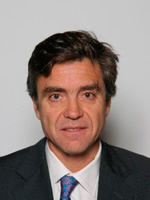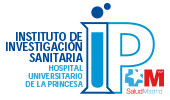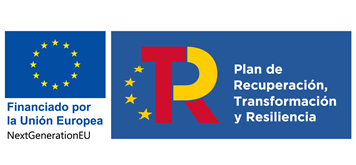New diagnostic and therapeutic advances in cardiovascular disease
Cardiovascular diseases represent the main cause of mortality in developed countries, including Spain. Coronary artery disease is the greatest strain on these patients which is why the greatest efforts in research for prevention, diagnosis and treatment are being exercised in order to address this highly prevalent and demanding clinical condition. Percutaneous coronary intervention, with stent implantation, continues to be the most widely used method for revascularisation of these patients.
Lines of research
Our group pursues several lines of research.
"Stent failure" is our main research interest and includes both intra-stent restenosis and stent thrombosis. It has recently been suggested that neoatherosclerosis might provide a connection between these two conditions. Specifically, we are seeking to determine the value of the new generation of drug-eluting stents in the treatment of patients with different clinical and anatomical features. We are also developing strategies to optimise stent implantation. As part of this, "face-to-face" randomised clinical trials comparing different therapeutic devices are highly interesting.
We are also interested in the vascular healing and repair process following stent implantation. A detailed assessment of the target coronary segment using sophisticated intracoronary imaging techniques (optical coherence tomography, intravascular ultrasound) and a functional assessment of the physiology of the blood vessel wall (cable pressure and reserve flow fraction) are also highly valuable. These techniques reveal new information on vessel repair, endothelialisation, neointimal hyperplasia response, and may also reveal risk markers for stent thrombosis.
In Spain we lead controlled multi-centre initiatives to establish the relative value of different coronary interventions for patients with intra-stent restenosis. We are also actively involved in several international initiatives focused on the formidable problem of stent thrombosis.
New intracoronary diagnostic techniques, on the other hand, are offering new perspectives on "vulnerable plaque" and may help us to understand the mechanisms involved in the pathophysiology of acute coronary syndromes and in the progression and regression of coronary atherosclerosis. Our group is actively involved in research projects on disease progression and the establishment of additional criteria to define injury severity.
The diagnosis and clinical management of patients with acute coronary syndrome are a major part of our daily clinical activity and also stimulate many of our research projects. Different strategies are being evaluated in patients with elevated ST segment acute myocardial infarction. This includes evaluating preventive strategies, diagnosis and management initiatives for these patients.
Powerful new antiplatelet and antithrombotic drugs are currently available and we are studying their value in several subgroups of patients with coronary artery disease requiring coronary revascularisation, or simply medical review.
Last but not least, structural heart disease is another important evolving field. We are deeply interested in defining the role of some emerging interventional techniques such as aortic valve transcatheter implantation in elderly patients with severe aortic stenosis, and the value of other new devices for correcting various structural heart diseases.
Team members

Group leader: Fernando Alfonso Manterola Hospital Universitario La Princesa |
Other team members.Hospital Universitario La Princesa:
|
Alfonso F, Pérez-Vizcayno MJ, Cárdenas A, García Del Blanco B, Seidelberger B, Iñiguez A, Gómez-Recio M, Masotti M, Velázquez MT, Sanchís J, García-Touchard A, Zueco J, Bethencourt A, Melgares R, Cequier A, Dominguez A, Mainar V, López-Mínguez JR, Moreu J, Martí V, Moreno R, Jiménez-Quevedo P, Gonzalo N, Fernández C, Macaya C. A Randomized Comparison of Drug-Eluting Balloon Versus Everolimus-Eluting Stent in Patients With Bare-Metal Stent-In-Stent Restenosis. J Am Coll Cardiol 2014. 63: 1378-1386. FI: 16.503(Q1). PMID: 24412457. DOI: 10.1016/j.jacc.2013.12.006.
Alfonso F, Pérez-Vizcayno MJ, Dutary J, Zueco J, Cequier A, García-Touchard A, Martí V, Lozano I, Angel J, Hernández JM, López-Mínguez JR, Melgares R, Moreno R, Seidelberger B, Fernández C, Hernandez R; RIBS-III Study Investigators (under the auspices of the Working Group on Interventional Cardiology of the Spanish Society of Cardiology). Implantation of a drug-eluting stent with a different drug (switch strategy) in patients with drug-eluting stent restenosis. Results from a prospective multicenter study (RIBS III [Restenosis Intra-Stent: Balloon Angioplasty Versus Drug-Eluting Stent]). JACC Cardiovasc Interv 2012. 5:728-737. FI: 6.522(Q1). PMID: 22814777. DOI: 10.1016/j.jcin.2012.03.017.
Alfonso F, Dutary J, Paulo M, Gonzalo N, Pérez-Vizcayno MJ, Jiménez-Quevedo P, Escaned J, Bañuelos C, Hernández R, Macaya C. Combined use of optical coherence tomography and intravascular ultrasound imaging in patients undergoing coronary interventions for stent thrombosis. Heart 2012. 98:1213-1220. FI: 5,014(Q1). PMID: 22826559. DOI: 10.1136/heartjnl-2012-302183.
Alfonso F1, Paulo M, Gonzalo N, Dutary J, Jimenez-Quevedo P, Lennie V, Escaned J, Bañuelos C, Hernandez R, Macaya C. Diagnosis of spontaneous coronary artery dissection by optical coherence tomography. J Am Coll Cardiol 2012: 59:1073-1079. FI: 14,086(Q1). PMID: 22421300. DOI: 10.1016/j.jacc.2011.08.082.
Alfonso F, Byrne RA, Rivero F, Kastrati A. Current Treatment of In-Stent Restenosis. J Am Coll Cardiol 2014. 63: 2659-2673. FI: 16.503(Q1). PMID: 24632282. DOI: 10.1016/j.jacc.2014.02.545.
Alfonso Manterola, Fernando – Rivero Crespo, Fernando. Obtención de imagen diagnóstica molecular intracoronaria in vivo mediante el uso de Tomografía de Coherencia Óptica y nanopartículas funcionalizadas. PI16/00812. ISCIII. 2017-2019.
Desarrollar medios de contraste basados en el uso de nanopartículas funcionalizadas que permitan el diagnóstico molecular en la aterosclerosis coronaria.
This grant is funded by the 2013-2016 Spanish Science, Technology and Innovation Research Plan and the ISCIII – Subdirectorate General for Evaluation and Promotion of Research – and co-financed by the European Regional Development Fund, Operational Programme Smart Growth 2014-2020 according to Regulation (EU) no. 1303/2013.










